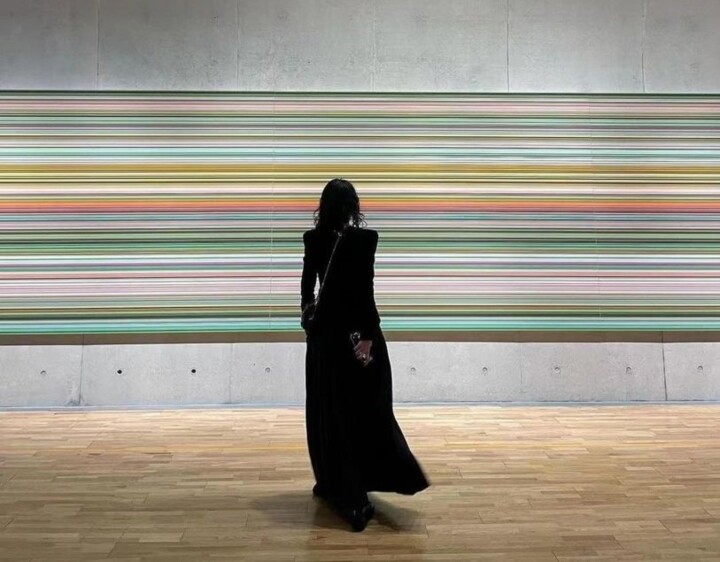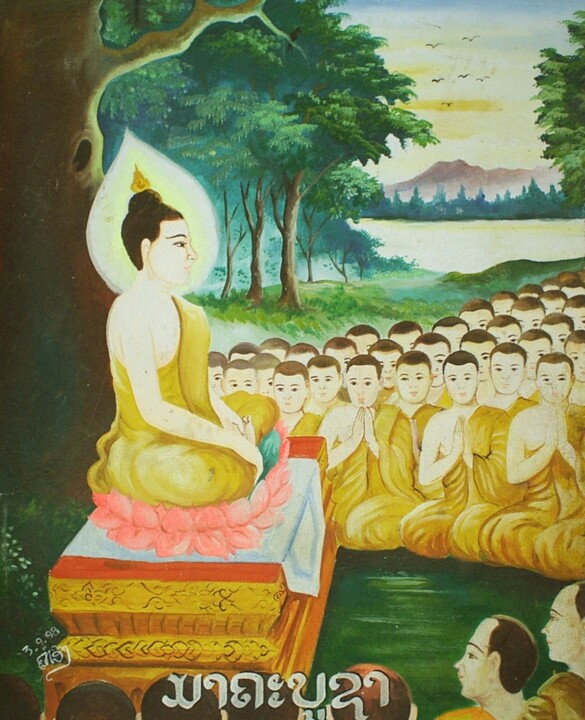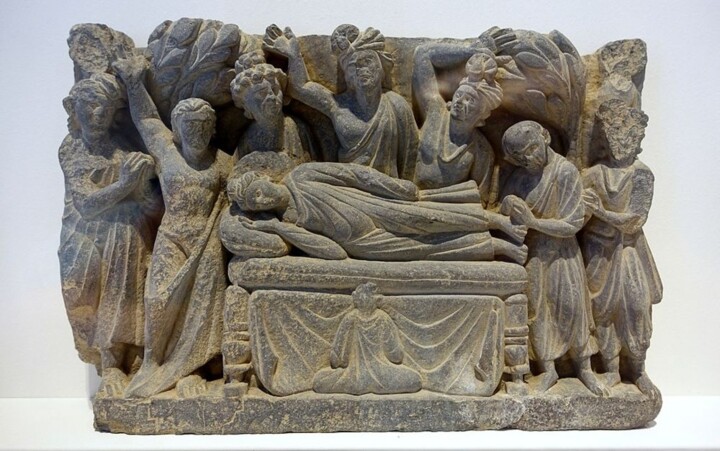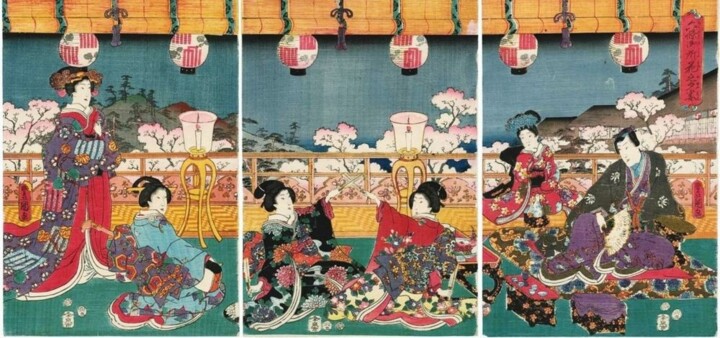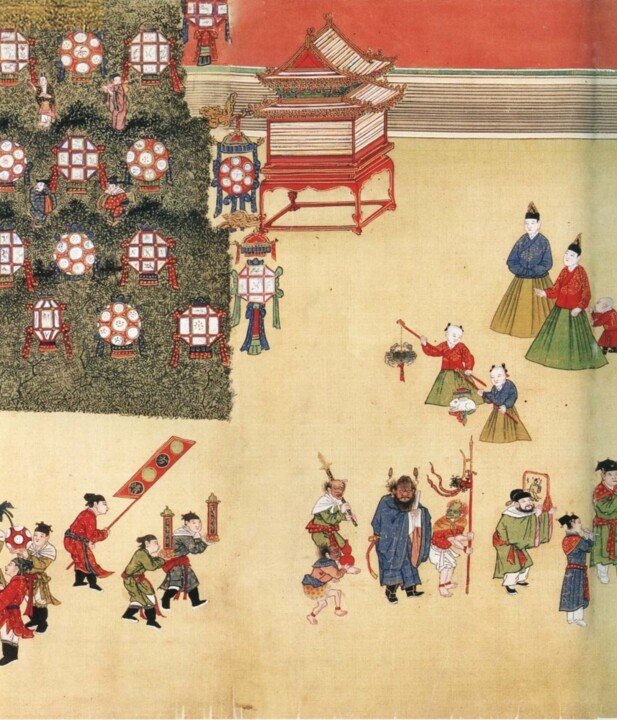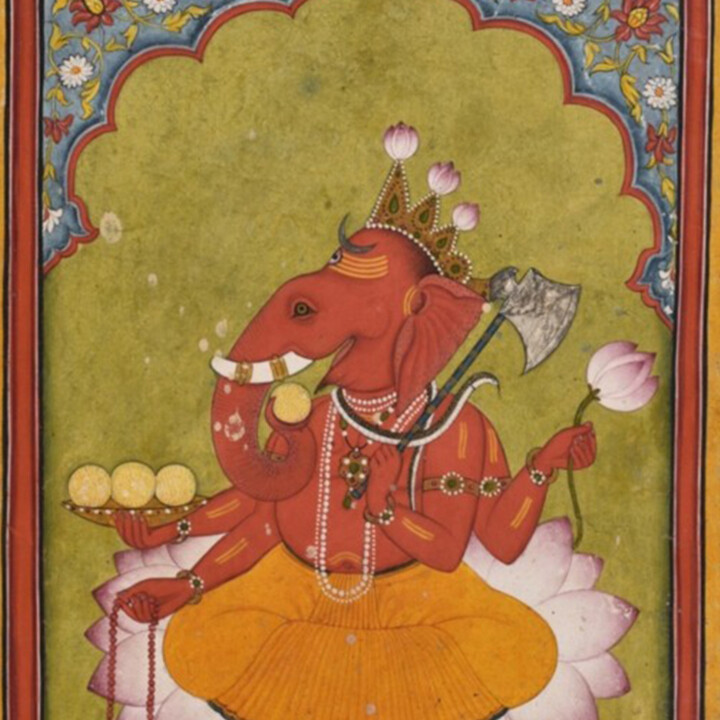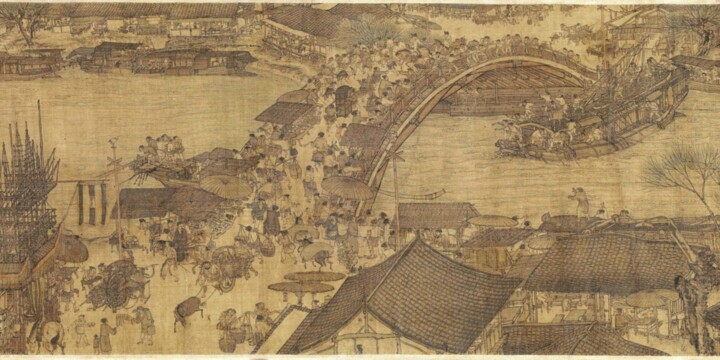Lifestyle
Exploring the Artistic Legacy of Liu Yiqian and Wang Wei
Nov 6, 2023
|
4 minutes read
Liu Yiqian and Wang Wei are a globally recognized power couple when it comes to art collecting in Asia. They are the Chinese billionaire collectors who established the Long Museum in Shanghai, which stands as one of China's foremost private art institutions.
Art History
Threads of Tradition: Obon's Influence on Contemporary Art
Jun 4, 2024
|
6 minutes read
Originating over 500 years ago, Obon blends ancient beliefs with Buddhist customs, becoming a major family reunion holiday in Japan. It's celebrated with vibrant festivities spanning three days, embodying themes of remembrance, gratitude, and community. Its influence extends to contemporary art, inspiring artists to reinterpret its themes, ensuring an enduring legacy.
Art History
Artistic Interpretations of Magha Puja
May 30, 2024
|
6 minutes read
Magha Puja, a revered festival among Theravāda Buddhists, originated from a historic gathering between the Buddha and his disciples, emphasizing core principles of the faith. Instituted by King Rama IV in 1851, it symbolizes communal harmony and spiritual urgency, inspiring contemporary art and reaffirming its relevance in the modern world.
Art History
Asalha Puja and Art: A Harmonious Celebration of Dharma
Jun 17, 2024
|
12 minutes read
The Asalha Puja, an important Buddhist celebration marking the Buddha's first sermon, is enriched by various forms of artistic expression such as paintings, frescoes and sculptures, incorporating both traditional and modern techniques.
Art History
Gates of the Afterlife: Exploring the Zhongyuan Festival Through Art
Jun 12, 2024
|
7 minutes read
The Ghost Festival, also called Zhongyuan or Yulanpen Festival, is observed in East and Southeast Asian cultures on the 15th night of the seventh lunar month. It centers on ancestor veneration and the cyclical nature of life and death, resonating through historical roots to modern expressions in art and rituals, offering insight into the human experience and the link between the spiritual and mundane realms.
Art History
Blending Tradition and Modernity: Vesak's Artistic Exploration of Symbolism
May 6, 2024
|
10 minutes read
Vesak is a significant Buddhist festival commemorating the birth, enlightenment, and death of the Buddha. Artistic representations of Vesak commonly utilize traditional symbols like the Bodhi tree, lotus flower, and Buddha statues, invoking themes of enlightenment, compassion, and spiritual awakening.
Artist Portraits
Korakrit Arunanondchai: Multimedia & Spiritual Tech Art
Oct 10, 2024
|
8 minutes read
Explore Korakrit Arunanondchai's captivating fusion of multimedia, technology, spirituality, and immersive video in his groundbreaking art installations and exhibitions.
Art History
Moonlit Meditations: Uposatha and Artistic Expression
Jun 11, 2024
|
9 minutes read
Uposatha, originating from the Muluposatha Sutta around 600 BCE, is a crucial Buddhist observance that offers opportunities for ethical reflection and spiritual growth through practices tied to lunar phases. Adapted from pre-Buddhist Brahmin rituals, it involves intensified precept observance, meditation, and Dhamma study, fostering communal reciprocity and remaining significant in both Theravada and Mahayana traditions.
Art History
Cherry Blossom Celebration: Capturing Hanami Through Art and Tradition
May 21, 2024
|
10 minutes read
Hanami is the Japanese tradition of cherry blossom viewing, celebrated annually during the blooming season in spring. In art, Hanami is represented through various mediums such as poetry, painting, and photography, capturing the beauty and symbolism of cherry blossoms and reflecting on themes of impermanence and the appreciation of fleeting moments.
Art History
Losar: A Source of Inspiration for Contemporary Artists
Jun 10, 2024
|
13 minutes read
Losar, the Tibetan New Year festival, has ancient roots in Bon traditions and harvest festivals, highlighting its cultural and spiritual significance. Rituals and elemental celebrations are central to its observance. Contemporary artworks inspired by Losar explore themes of resilience and cultural identity, affirming its dynamic cultural status.
Art History
Setsubun: Celebrating Tradition through Art
Jun 6, 2024
|
7 minutes read
Setsubun is a traditional Japanese festival marking the day before the beginning of spring, rooted in ancient Chinese customs introduced to Japan in the 8th century. It involves various rituals aimed at expelling evil spirits and inviting good fortune, such as bean-throwing and eating ehōmaki, with its themes and symbols inspiring contemporary art that highlights the festival's enduring cultural significance.
Art History
The Lantern Festival's Influence on Art
May 23, 2024
|
8 minutes read
Explore the evolution of the Lantern Festival through contemporary art, witnessing a fusion of ancient customs with modern creativity. From innovative lantern designs to large-scale public installations and international collaborations, discover how this age-old celebration continues to shine brightly in the world of art.
Art History
Sacred Creations: The Art of Ganesh Chaturthi
May 22, 2024
|
13 minutes read
Ganesh Chaturthi, one of India's most celebrated festivals, is as much a cultural spectacle as it is a religious devotion, marked by vibrant displays of artistry that capture the imagination of millions. The festival's artistic expressions are not merely decorative but serve as a medium for storytelling, community bonding, and cultural preservation...
Art History
Shōgatsu and the Takarabune: Symbolic Imagery and Cultural Heritage
Jun 13, 2024
|
11 minutes read
Shōgatsu, Japan's New Year celebration, evolved from the Meiji period's calendar reforms, shifting from the lunisolar to the Gregorian calendar. Despite changes, it remains pivotal, featuring rituals like hatsumode shrine visits and symbolic foods like osechi-ryōri and zōni, symbolizing renewal and family unity. Contemporary Japanese art draws from these traditions, merging traditional motifs with modern styles, preserving Shōgatsu's cultural importance in global practices and art.
Art History
Mooncakes to Lanterns: Artistic Symbols of the Mid-Autumn Celebration
Jun 17, 2024
|
11 minutes read
The Zhongqiu Festival, or Mid-Autumn Festival, is celebrated with a rich tapestry of religious and cultural art forms, each carrying deep symbolic meanings. This festival, deeply rooted in Chinese tradition, showcases a variety of artistic expressions that encompass moon worship, offerings to the moon, and the display of lanterns, all of which play crucial roles in the festivities.
Art History
The color blue: a successful classic
Apr 6, 2022
|
6 minutes read
The color blue, in its different and most popular shades, such as Egyptian blue, ultramarine blue, cobalt blue, cerulean blue, Prussian blue and International Klein Blue, has been the protagonist of different eras, in which timeless masterpieces have been generated, extending from the Egyptian world to contemporary art...
Artist Portraits
Yoshitomo Nara: Pop Art's Iconic Big-Headed Girls
Dec 19, 2024
|
15 minutes read
Yoshitomo Nara (born December 5, 1959, in Hirosaki, Japan) is a prominent Japanese artist known for his "big-headed girls" with piercing eyes, which convey childlike expressions mixed with adult emotions. His works, blending kawaii (cuteness) with dark humor and personal memories, have been exhibited globally and housed in institutions like MoMA and LACMA.
Art History
Artistic Depictions of Qingming: A Visual Narrative
May 31, 2024
|
8 minutes read
The Qingming Festival, a traditional Chinese holiday for ancestor veneration, is observed globally by ethnic Chinese communities. Originating over 2500 years ago, its significance today is credited to Emperor Xuanzong of the Tang Dynasty. With rituals like tomb-sweeping and offerings, it honors ancestral bonds and themes of remembrance and filial piety, depicted in both classic and modern art.
Artist Portraits
Antony Gormley: Sculpting the Human Experience
Mar 17, 2025
|
8 minutes read
Antony Gormley is a British sculptor known for his explorations of the human form, space, and materiality, often using cast iron and steel to create life-sized body sculptures. His work challenges the boundaries between art, architecture, and nature, encouraging viewers to reflect on their own physical presence in the world.
Artist Portraits
Exploring Takashi Murakami's Superflat Universe
Jun 26, 2024
|
9 minutes read
Born in Tokyo in 1962, Takashi Murakami is a renowned Japanese contemporary artist known for his diverse practice in painting, sculpture, fashion, and animation. Blurring the lines between high and low art, he draws from Japan's aesthetic traditions and postwar culture. His influential "Superflat" theory, introduced in 2000, critiques Japanese consumer culture through flattened forms, merging traditional and contemporary art.
Art History
Katsushika Hokusai
Mar 30, 2023
|
10 minutes read
Katsushika Hokusai was an 18th and 19th-century Japanese artist, painter, and printmaker, born in 1760 and died in 1849. He is best known for his ukiyo-e prints, a genre of Japanese art that depicts scenes of daily life, landscapes, and characters.
Art History
Holy Artistry: Unveiling the Spiritual Canvas at Niiname-sai
Jun 19, 2024
|
10 minutes read
Niiname-sai, also known as the Harvest Festival, is not only a significant religious ceremony within the Shinto tradition but also a celebration rich in artistic expression. This festival showcases a variety of traditional Japanese artworks and artifacts...

